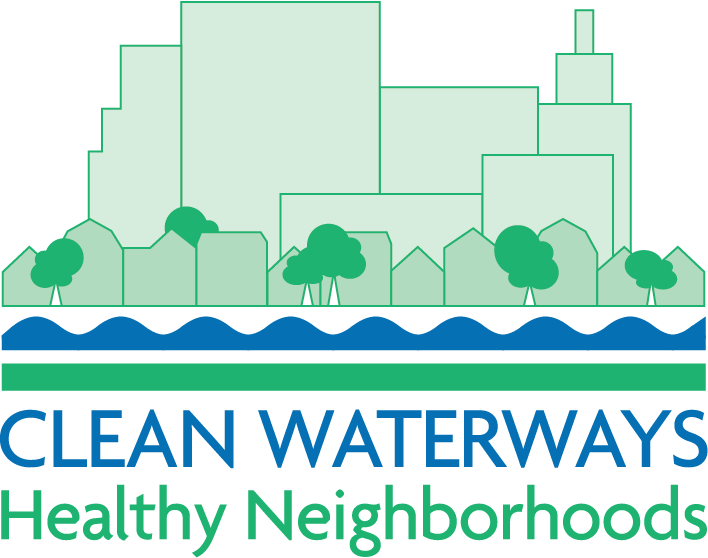Combined vs. Separate Sewer Systems
LEFT: In dry conditions, separate and combined sewer systems both direct the flow of sewage to the treatment facility
RIGHT: In wet conditions, combined sewer systems cannot handle the volume of flow and a combined sewer overflow event occurs.
In a separate sewer system, stormwater and sanitary flows are conveyed independently from one another. Stormwater runoff is usually collected and discharged directly to local water bodies or retention ponds. Domestic sewage and industrial wastewater are conveyed to a treatment facility for treatment prior to discharge to a water body.
In a combined sewer system, stormwater runoff, domestic sewage, and industrial wastewater are collected and combined in a single pipe network. During dry weather conditions, that combined flow is conveyed to the treatment facility for treatment prior to discharge to a water body. During wet weather, because of the addition of stormwater, the combined flow can exceed the capacity of the conveyance system or wastewater treatment facilities. When this occurs, these systems are designed to discharge the excess combined storm and wastewater to local waterways through a permitted CSO outfall.
History of Combined Sewers
During the 1800s, large storm sewers were installed to eliminate flooding during storms. The invention of indoor plumbing created a need for sewage disposal. Since storm sewers were already in the streets and led to rivers, these were used as a combined sewer system for sewage and flood water
Over time, increased population growth and industrialization overcame the river’s capacity for cleaning itself. Malodorous conditions led to collection and treatment of sewage.
CSOs are often outdated and in need of repair
Why are Combined Sewers an Issue?
images courtesy of njdep
Despite the health risks associated with releasing untreated sewage into the environment, combined sewer systems were a major improvement when first introduced in the 19th century. In many places, they replaced uncovered cesspool ditches that ran along roadways and were flushed out naturally with rainwater. These open-air sewers did not protect the public from the dangers of human and industrial wastes. When introduced, combined sewer systems took the sewage underground, greatly improving the health and sanitation of our streets and communities. When communities were small, the impact of CSOs went largely undetected. Yet, as cities grew, so did the impact of untreated wastewater on our waterways. This wastewater contains many contaminants, including microbial pathogens, suspended solids, and chemicals.
CSOs discharge untreated wastewater during wet weather.
CSO discharges contain disease causing organisms in waterbodies, measured as enterococcus, fecal coliform, and E. Coli.
Swimmers, boaters and waders and other recreational users of waterbodies are often affected by these intestinal illnesses.
Currently, over 40 million people in the United States live in communities with combined sewer systems, which discharge more than 850 billion gallons of untreated wastewater annually. Most of these communities are in the Northeast and Great Lakes regions.
Map of CSO Communities
Image courtesy of WANE.COM
IMAGE courtesy of NJDEP

